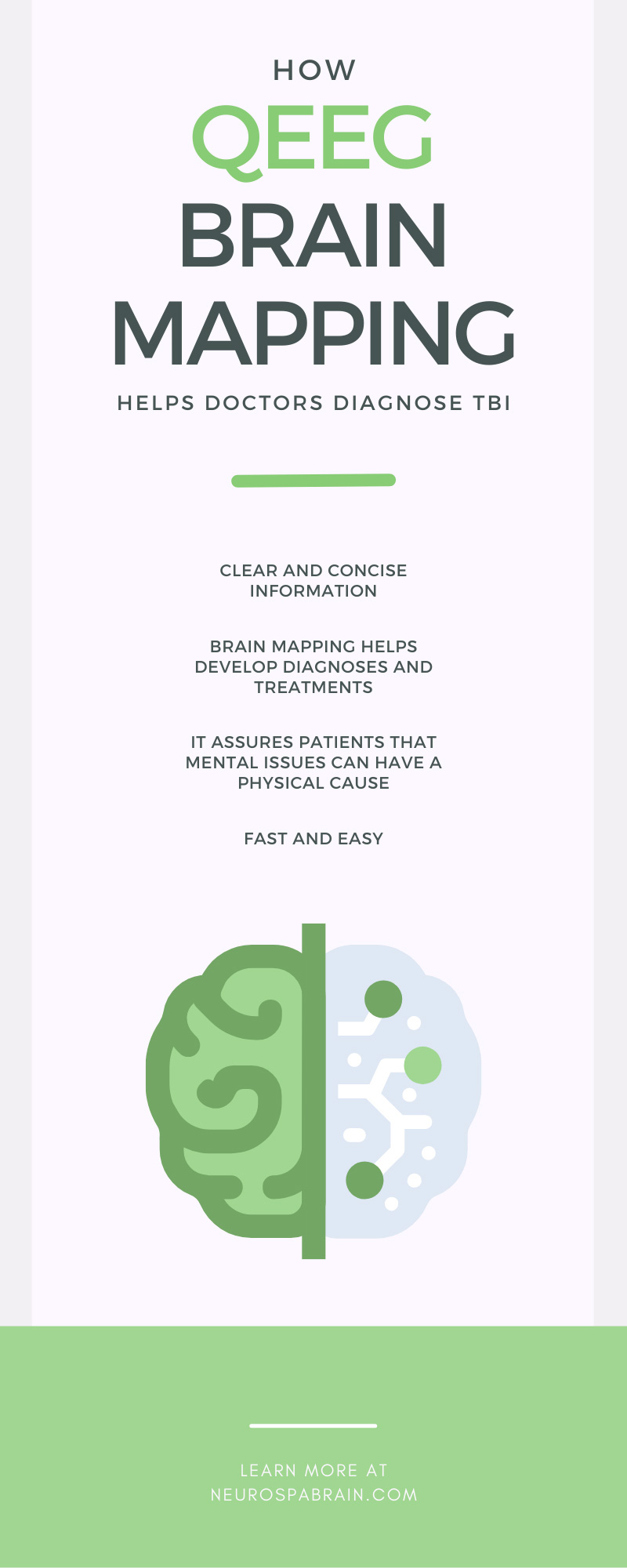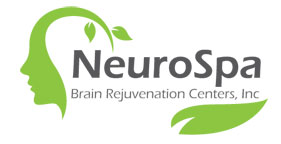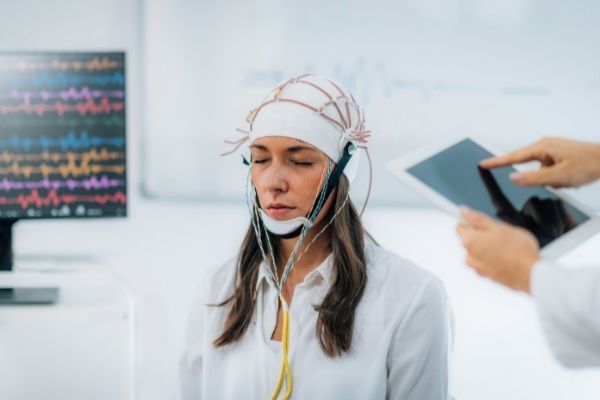Traumatic brain injuries (also known as TBIs), continue to be a growing public health problem—and one that’s not always easy to detect. The general populace shares a common risk for experiencing TBIs in falls, accidents, sports, and other circumstances where patients experience severe blows to the head. TBI occurs more often in men than women, and toddlers and people over 65 have a greater likelihood of experiencing it than other age groups. Finally, adolescents who participate in sports that provoke collisions and concussions are likely to experience TBI as a result.
Minor TBIs can cause temporary brain damage but can also cause more long-term effects. More serious TBI can cause internal bleeding or more widespread damage to the brain, leading to changed behavior, memory loss, physical handicaps, or even death. Insidiously, TBI can lie dormant in a brain, undetected, until it’s too late to treat it. That’s why several techniques, including quantitative electroencephalography—also known as QEEG brain mapping—have been developed. Here’s how QEEG brain mapping helps doctors diagnose TBI, in hopes of preventing further damage and ensuring the lives and quality of life of its sufferers.
What Is Quantitative Electroencephalography (QEEG)?
To understand QEEG and what it’s used for, one must start with its root word, electroencephalography (EEG). EEG technology was developed to detect and record the amount of electrical activity from the brain. Electrodes are attached to a person’s scalp and the device is activated. These electrodes pick up the electric signals generated by the brain and deliver the readings to the EEG device, which records the results, transcribing them to a paper or digital record.
EEG has proven to be an excellent tool, allowing doctors and researchers to study, diagnose, and treat such diverse conditions as epilepsy, sleep disorder, comas, and other conditions affecting or with a root cause in the brain. EEGs can also be used in emergency medicine for patients who are unconscious, have experienced strokes or other issues affecting the brain, and other similar situations. EEGs are noninvasive and swift in their delivery of information, unlike tests and diagnostic devices that take longer to operate and review, such as MRIs and CT scans. They’ve also proven useful in the brain mapping aspects of QEEG.
The Map and the Territory
Next, let’s explore how QEEG brain mapping helps doctors diagnose TBI. A patient is fitted with a special cap of electrodes. Upon activation, the brain mapping process charts patterns of activity across the brain’s surface, noting spots and types of activity in specific parts of the brain. After 15 minutes the brain mapping process is complete, and the acquired data is used to create a visual report. That’s a literal description. The report features illustrations of the brain with the areas charted marked clearly with their respective numerical readings. This is handy for illustrating any outstanding issues or places in the brain demonstrating damage or other problems. It also makes it easier for the doctor to discuss the findings with his or her patient, which leads to the first benefit of brain mapping.
Clear and Concise Information
The brain map can take something nebulous like brain waves and convert them into easy-to-understand imagery. Sometimes, it’s difficult for doctors to explain advanced ideas about the brain and the rest of the body. Brain mapping provides a short-hand and visually simplified means of explaining difficult concepts.
It Assures Patients That Mental Issues Can Have a Physical Cause
Feelings and sensations are often difficult to put into words, or to connect with the specific parts of the brain that experience them. Brain mapping can help doctors identify how certain sections of the brain may be affecting the patient’s moods and symptoms. Likewise, the patient can understand how physical changes to the brain can affect thinking processes, emotions, and so forth. A stigma remains attached to mental health and seeking help, but either way, patients should feel comfortable about sharing their concerns with their healthcare professionals.
Brain Mapping Helps Develop Diagnoses and Treatments
When familiar patterns and readings arise, especially regarding TBI, doctors are quickly able to decide upon a diagnosis and subsequent treatment for a patient. Brian mapping is especially helpful with TBI because it provides a clear and recognizable visual image of where damage is in the brain and the parts of the brain it is affecting. Knowing a patient’s history, particularly if it involves a massive or even minor injury, can help the doctor correlate the findings of the brain mapping with TBI.
Fast and Easy
One other benefit of using QEEG brain mapping to diagnose TBI is that the process is fast, easy, and noninvasive. It can also be done soon after a potentially concerning injury and can measure changes in a person’s symptoms demeanor over time. QEEG brain mapping is typically conducted immediately after a serious head injury, and especially if the patient experiences unconsciousness and other symptoms. Basic cognitive testing is performed, such as eye tracking and answering questions. But a QEEG can provide an initial and more informative look into the brain. As with epilepsy, an EEG can also be used to detect seizures that might not physically manifest themselves. Often, individuals with extreme TBIs will be set up with an EEG to ensure they’re not experiencing such seizures, also known as nonconvulsive seizures. The use of QEEG and brain mapping is a simple continuation of this sort of evaluation and monitoring.
Conclusions
QEEG offers a fascinating and potentially life-saving way to find and assess traumatic brain injuries or TBI. While they aren’t always conclusive and sometimes show no clear evidence of TBI, they do provide one type of assessment. This assessment can be combined with other diagnostic tools to ensure patients who suffer head injuries are protected from further harm and treated before any long-term damage can take hold. If you have any questions about QEEG brain mapping or other services and treatments that our facility offers, please feel free to contact us or ask for a consultation with your physician. We are available by phone and email and look forward to hearing from you.



